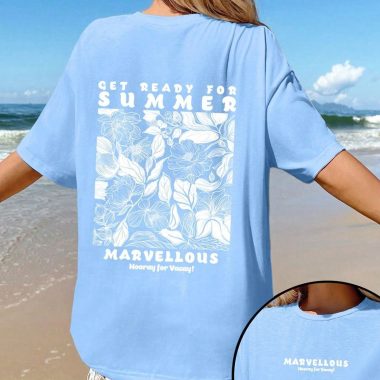Fashion, a term that transcends simple clothing, is a reflection of identity, society, and human history. From primitive attire created for protection to the extravagant designs that walk today’s runways, fashion has evolved into a cultural phenomenon that expresses individuality, challenges conventions, and mirrors the values of civilizations. It shapes the way people perceive themselves and others, weaving together threads of creativity, tradition, innovation, and social change. While fashion may often be dismissed as superficial or fleeting, its impact is both profound and enduring, revealing the complex interplay between self-expression and the social fabric of humanity.
The roots of fashion can be traced back to ancient times when clothing served a functional purpose. Early humans wore animal skins for warmth, but even these rudimentary garments began to show signs of ornamentation, suggesting that the desire to adorn oneself is as old as humanity itself. As societies developed, so too did the complexity of their garments. Ancient Egyptian fashion emphasized linen robes and intricate jewelry that signified status and religious belief. In ancient Greece, the use of draped fabric symbolized beauty and simplicity, while in Rome, togas indicated citizenship and social class. Throughout history, clothing has communicated much more than mere function; it has revealed hierarchies, gender roles, and even political affiliations.
As civilizations grew, so did the cultural significance of fashion. During the Middle Ages in Europe, sumptuary laws regulated what individuals could wear based on their social class. The Renaissance ushered in a period of artistic flourishing, and fashion followed suit, with luxurious fabrics like velvet and silk signifying wealth and power. In Asia, dynastic cultures like those of China and Japan cultivated their own distinct fashion traditions, such as the intricately embroidered qipao and the elegant, symbolic kimono. In each of these traditions, clothing was not simply fabric and thread; it was a form of coded language, signifying everything from marital status to philosophical belief.
The modern fashion industry began to take shape in the nineteenth century with the advent of industrialization. Mechanized production made clothing more accessible, and new fabrics such as cotton and synthetic blends began to change the texture and affordability of fashion. The rise of department stores and fashion houses introduced consumers to ready-made clothing, shifting fashion from a purely elite domain to something more democratically distributed. Designers like Charles Frederick Worth, often considered the father of haute couture, elevated fashion design to an art form, setting the precedent for the runway shows and design houses that dominate today.
As the twentieth century unfolded, fashion became increasingly dynamic and reflective of sociopolitical movements. The flapper dresses of the 1920s challenged Victorian modesty and symbolized female liberation. The sharp suits and pin curls of the 1940s reflected resilience during wartime, while the free-spirited bohemian styles of the 1960s and 1970s expressed countercultural values. Fashion began to react quickly to changes in society, becoming both a mirror and a catalyst for progress. Icons like Coco Chanel revolutionized women’s fashion by introducing comfort and simplicity, while Vivienne Westwood brought punk aesthetics into the mainstream, using fashion as a form of rebellion. These developments revealed the capacity of fashion to question authority, challenge norms, and promote new ideas.
In today’s globalized world, fashion continues to evolve at a rapid pace, fueled by digital technology and social media. Platforms like Instagram, TikTok, and Pinterest have transformed everyday individuals into style influencers, blurring the lines between professional designers and amateur stylists. The democratization of fashion means that trends now emerge from a diverse range of sources, no longer confined to elite fashion weeks or glossy magazines. Streetwear and high fashion intersect in unexpected ways, and cultural exchange has become a defining feature of contemporary style. Designers draw inspiration from indigenous patterns, historical silhouettes, and futuristic technology, creating garments that are as eclectic as they are expressive.
Fashion today is also marked by increasing awareness and activism. The environmental impact of fast fashion has sparked a movement toward sustainability, with designers and consumers alike seeking eco-friendly alternatives. Ethical sourcing, upcycling, and circular fashion models have gained traction, as the industry grapples with its role in climate change and labor exploitation. Brands are being held accountable, and transparency has become a valuable currency. Fashion is no longer just about looking good; it’s about doing good and making conscious choices that reflect one’s values.
Moreover, fashion is an essential tool for identity and empowerment. It allows individuals to articulate who they are and what they stand for, often before they speak a word. For marginalized communities, fashion can be a form of resistance and pride. The rise of gender-neutral clothing challenges the binary understanding of masculinity and femininity, creating inclusive spaces for self-expression. Movements such as Black Lives Matter and LGBTQ+ rights have found sartorial expressions that amplify their messages and unite supporters. In these instances, clothing becomes more than a trend; it becomes a statement, a banner of visibility and solidarity.
Fashion also plays a significant role in shaping cultural narratives. It is woven into music, film, literature, and art, becoming part of the broader cultural landscape. The iconic leather jacket worn by James Dean, the flowing gowns of Bollywood heroines, or the minimalist aesthetic of Scandinavian design all demonstrate how fashion transcends the runway and enters the collective imagination. It tells stories, evokes emotions, and captures the spirit of a generation. Designers are not merely creators of garments; they are storytellers, shaping the visual language of the times.
Despite its many positive aspects, the fashion world is not without flaws. It can be exclusionary, reinforcing unrealistic beauty standards and elitism. The pressure to conform to ever-changing trends can lead to overconsumption and waste. Moreover, the rapid pace of trend cycles, driven by social media and consumer demand, often sacrifices craftsmanship and longevity in favor of instant gratification. These challenges call for a more thoughtful and intentional approach to fashion, one that values creativity, sustainability, and inclusivity over profit and novelty.
Fashion’s influence is undeniable, and its complexity is part of what makes it so fascinating. It is an industry, an art form, a social practice, and a personal ritual all at once. Whether through a handmade garment passed down through generations or a viral trend that spans continents, fashion connects people to their histories, communities, and aspirations. It celebrates difference while also building bridges, allowing individuals from diverse backgrounds to share and appreciate each other’s stories through what they wear.
Looking toward the future, fashion will likely continue to break boundaries and embrace hybridity. Technology will play an even larger role, with innovations like virtual fashion, digital wardrobes, and AI-driven design revolutionizing the way people create and consume clothing. Yet, even as fashion becomes more digital, its essence will remain rooted in human experience and emotion. The tactile pleasure of fabric, the thrill of finding the perfect outfit, and the confidence that comes from wearing something that feels authentic cannot be replicated by algorithms alone.
Ultimately, fashion endures because it speaks to something deeply human—the desire to be seen, understood, and remembered. It is not merely about covering the body, but about revealing the self. Through its colors, textures, and silhouettes, fashion tells stories that words cannot always capture. It challenges us to think, feel, and imagine. In every stitch and seam, fashion holds a mirror to society and invites us to consider who we are and who we wish to become.



